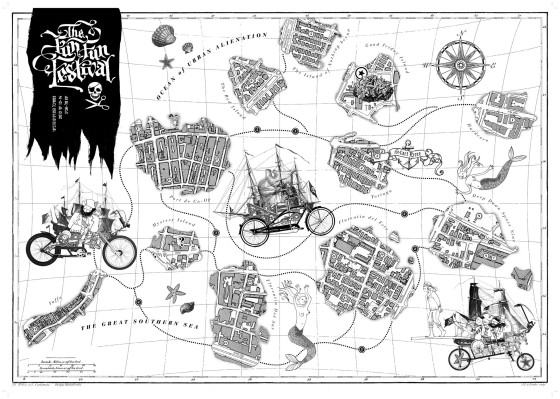Lecture in English language by Mārcis Rubenis (Riga, Latvia), co-founder of Free Riga 2014 & Roy Fabian (Tel-Aviv, Israel) architect, artist
Date: 17 May, 2014, 17 h
Venue: Rögtön jövök! Projekt Galéria (1052 Budapest, Kossuth Lajos utca 14-16.)
Free Riga 2014 contributes and acts in support of integrated projects for urban regeneration and reclamation of urban wasteland. The aim is to support integrated projects for urban regeneration and reclamation of urban wasteland zones especially by rehabilitating unused spaces like older buildings, factories and derelict built-up areas for cultural and social use.

In recent years the Tel-Aviv planing department grew interested in methods involving culture and art in urban renewal. Tel-Aviv’s active independent culture scene seemed like a potentialy prominant partner for such urban experiments. Following a comprehensive analysis of the city’s potential to deploy DIY culture and art for the benefit of urban regeneration, a more foccused pilot project was developed, reconsidering standard development strategies for the innercity neighborhood of Neve Shaanan.
 Mārcis Rubenis is a creative entrepreneur, activist and workshop facilitator. He is one of the founders of Free Riga, movement to open up empty houses of Riga, capital of Latvia, for use of creative, cultural and social use. He has been involved both in civic activisms fighting agains unchecked skyscraper development in Riga in 2006, later moving to bridge the communication gap between inhabitants and the municipality. He is one of the founders of www.stakeholde.rs, engagement and collaborative mapping internet tools, as well idejuTALKA, co-creative workshop methodology used in companies, municipalities and state institutions across the Baltics.
Mārcis Rubenis is a creative entrepreneur, activist and workshop facilitator. He is one of the founders of Free Riga, movement to open up empty houses of Riga, capital of Latvia, for use of creative, cultural and social use. He has been involved both in civic activisms fighting agains unchecked skyscraper development in Riga in 2006, later moving to bridge the communication gap between inhabitants and the municipality. He is one of the founders of www.stakeholde.rs, engagement and collaborative mapping internet tools, as well idejuTALKA, co-creative workshop methodology used in companies, municipalities and state institutions across the Baltics.
 Roy Fabian is an architect and artist. In his practice he combines both professions as a prism for understanding urban development. He has conducted research for the Tel Aviv municipality focusing on urban issues involving history, planning, preservation, culture and art. As an atist he has experimented in community involved art, as well audience participatory installations. His collaborations with peer artists have culminated in public space art events including independent art festivals and DIY Culture projects.
Roy Fabian is an architect and artist. In his practice he combines both professions as a prism for understanding urban development. He has conducted research for the Tel Aviv municipality focusing on urban issues involving history, planning, preservation, culture and art. As an atist he has experimented in community involved art, as well audience participatory installations. His collaborations with peer artists have culminated in public space art events including independent art festivals and DIY Culture projects.
[variations for vacancy] series presents relevant projects engaged with urban vacancy and temporary uses from all over the world.
The program was made possible by the cooperation of the City Municipality of Budapest and the Hungarian Contemporary Architecture Centre.




